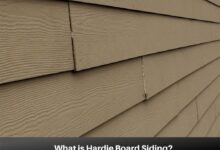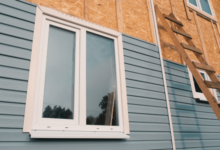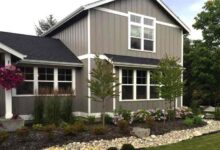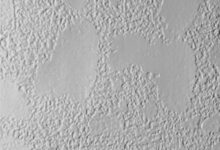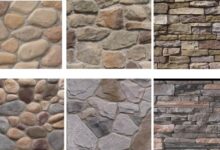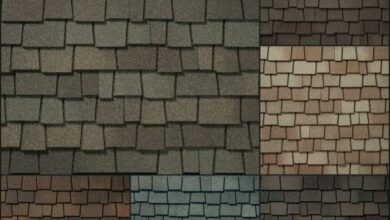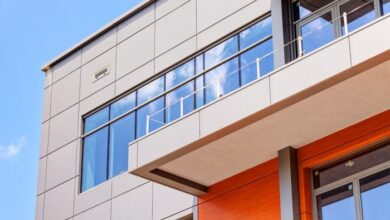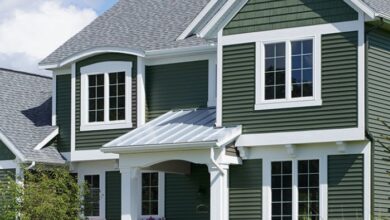Trespa Siding A Comprehensive Guide
Trespa siding represents a compelling alternative in the world of exterior cladding. Its unique composition, a high-pressure laminate, offers superior durability and weather resistance compared to traditional materials like wood, vinyl, or fiber cement. This guide delves deep into every aspect of Trespa siding, from its manufacturing process and aesthetic versatility to installation, maintenance, cost considerations, and long-term value. We’ll explore its sustainability credentials and examine what real customers are saying about their experiences with this innovative siding solution.
From understanding the material’s core properties and exploring diverse design applications to mastering installation techniques and navigating cost comparisons, this guide provides a holistic overview. We’ll also address common concerns and misconceptions surrounding Trespa siding, ensuring you have the knowledge needed to make an informed decision for your next project.
Trespa Siding Material Properties
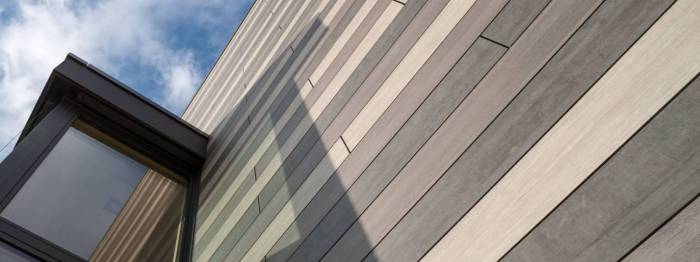
Trespa siding, a popular choice for exterior cladding, offers a compelling blend of aesthetics and performance. Its unique composition and manufacturing process contribute to its exceptional durability and resistance to the elements, making it a strong contender against traditional siding materials. This section delves into the specifics of Trespa siding’s material properties, comparing it to other popular options on the market.
Trespa Siding Composition
Trespa siding is a high-pressure laminate (HPL) composed primarily of wood fibers, thermosetting resins, and other additives. The wood fibers provide structural strength and stability, while the thermosetting resins act as a binder, creating a dense, non-porous surface. These additives can include pigments for color, UV stabilizers for protection against sun damage, and other components designed to enhance specific properties like impact resistance. The precise formulation is proprietary, but the resulting material is known for its exceptional hardness and dimensional stability.
Trespa Siding Manufacturing Process
The creation of Trespa siding involves a sophisticated process. First, a mixture of wood fibers and resins is formed into sheets. These sheets are then subjected to intense heat and pressure in a multi-stage process. This high-pressure lamination process compresses the material, creating a remarkably dense and durable surface. The final product undergoes a rigorous quality control process before being cut and finished to meet specific dimensions and specifications. This meticulous manufacturing process contributes significantly to the overall quality and longevity of the siding.
Durability Comparison: Trespa vs. Other Siding Materials
Trespa siding boasts superior durability compared to many other siding options. Unlike wood, which is susceptible to rot, insect infestation, and warping, Trespa is completely impervious to these issues due to its non-porous nature. Compared to vinyl siding, Trespa offers greater resistance to impact damage and fading. While fiber cement siding is also durable, Trespa often exhibits better resistance to staining and moisture penetration. The longevity of Trespa siding, often exceeding 50 years with proper maintenance, positions it as a high-value, long-term investment.
Trespa Siding Weather Resistance
Trespa siding’s exceptional weather resistance is a key selling point. Its dense, non-porous surface prevents water absorption, making it highly resistant to rain, snow, and humidity. The inclusion of UV stabilizers in the formulation ensures excellent resistance to sun fading and degradation, even under prolonged exposure to intense sunlight. Furthermore, Trespa siding maintains its structural integrity across a wide range of temperatures, exhibiting minimal expansion or contraction, even in extreme climates. This resilience to the elements significantly reduces maintenance needs and extends the lifespan of the siding.
Physical Property Comparison of Siding Materials
| Property | Trespa | Wood | Vinyl | Fiber Cement |
|---|---|---|---|---|
| Water Absorption | Negligible | High | Low | Low |
| Impact Resistance | High | Medium | Low | High |
| UV Resistance | Excellent | Poor | Good | Good |
| Maintenance | Low | High | Low | Medium |
Trespa Siding Installation and Maintenance
Proper installation and consistent maintenance are crucial for maximizing the lifespan and aesthetic appeal of your Trespa siding. Neglecting either can lead to premature deterioration and costly repairs. This section details the process of installing Trespa siding, provides a maintenance checklist, and Artikels best practices for cleaning and repair, all while highlighting common installation pitfalls to avoid.
Trespa Siding Installation: A Step-by-Step Guide
Installing Trespa siding requires precision and attention to detail. A poorly executed installation can compromise the siding’s weather resistance and overall longevity. The following steps provide a general overview; always refer to Trespa’s official installation guidelines for your specific product.
- Preparation: Begin by thoroughly inspecting the substrate for any imperfections, ensuring it’s clean, dry, and structurally sound. Address any issues such as rot or warping before proceeding. Properly plan the siding layout to minimize waste and ensure aesthetic consistency.
- Framing and Furring Strips: Install vertical furring strips with appropriate spacing, creating a ventilated air gap behind the siding. This is critical for moisture management and preventing trapped humidity. The spacing will depend on the specific Trespa siding profile and local building codes.
- Siding Installation: Starting at a corner or designated starting point, install the first panel, ensuring proper alignment and overlap. Use appropriate fasteners, ensuring they are correctly spaced and driven to avoid damaging the siding. Always follow the manufacturer’s recommended fastener type and spacing.
- Panel Installation: Continue installing panels, maintaining consistent spacing and alignment. Use a level to ensure vertical and horizontal alignment. Properly cut and fit panels around windows, doors, and other architectural features.
- Finishing: Install trim and flashing as needed to complete the installation. Ensure all joints and seams are properly sealed to prevent water penetration. A final inspection should verify that all panels are securely fastened and properly aligned.
Trespa Siding Maintenance Checklist
Regular maintenance is key to preserving the beauty and performance of Trespa siding. This checklist Artikels essential maintenance tasks and their recommended frequency.
- Annual Inspection: Visually inspect the siding for any signs of damage, such as cracks, chips, or loose fasteners. Address any issues promptly.
- Regular Cleaning: Clean the siding at least twice a year using a soft brush, mild detergent, and water. Avoid harsh chemicals or abrasive cleaners. A pressure washer can be used, but maintain a safe distance to avoid damaging the siding.
- Fastener Check: Periodically check all fasteners to ensure they remain secure. Tighten or replace any loose fasteners as needed.
- Sealant Inspection: Inspect all caulking and sealant around windows, doors, and other penetrations. Reapply sealant as needed to maintain a watertight seal.
Cleaning and Repairing Trespa Siding: Best Practices
Cleaning Trespa siding is generally straightforward. For stubborn stains, a mild detergent solution applied with a soft brush usually suffices. For more challenging stains, consult Trespa’s cleaning guidelines. Repairing minor damage often involves replacing individual panels; larger repairs may require professional assistance. Always use Trespa-approved repair materials and techniques.
Common Trespa Siding Installation Mistakes to Avoid
Several common mistakes can compromise the performance and longevity of Trespa siding. Avoiding these pitfalls is crucial for a successful installation.
- Improper Substrate Preparation: Failing to properly prepare the substrate, including addressing moisture issues or uneven surfaces, can lead to problems down the line.
- Insufficient Ventilation: Inadequate ventilation behind the siding can trap moisture, leading to damage and potential mold growth.
- Incorrect Fastener Usage: Using the wrong type or size of fasteners, or improper spacing, can result in loose panels and water penetration.
- Neglecting Sealants: Failing to properly seal joints and seams can compromise the siding’s weather resistance.
Necessary Tools and Materials for Trespa Siding Installation
Proper tools and materials are essential for a successful installation. This list provides a comprehensive overview.
- Measuring Tape
- Level
- Drill with appropriate drill bits
- Screwdriver (appropriate for chosen fasteners)
- Circular Saw or Panel Saw
- Safety Glasses
- Work Gloves
- Trespa Siding Panels
- Fasteners (specified by Trespa)
- Sealant (Trespa-approved)
- Furring Strips
- Trim and Flashing (as needed)
Trespa Siding Design and Aesthetics
Trespa siding offers a unique blend of durability and aesthetic versatility, making it a compelling choice for a wide range of architectural styles. Its smooth, non-porous surface allows for vibrant colors and diverse textures, providing designers with significant creative freedom. This section delves into the design applications, color options, and aesthetic comparisons of Trespa siding, showcasing its integration with other architectural elements and providing examples of its use in diverse building facades.
Design Applications of Trespa Siding
Trespa siding’s adaptability extends to various building types, from modern residential homes to commercial structures and even industrial facilities. Its resistance to weathering and impact damage makes it ideal for high-traffic areas or harsh climates. The material’s lightweight nature also simplifies installation, reducing labor costs and project timelines. Its clean lines and customizable options allow for seamless integration with various design concepts, from minimalist to traditional. The large format panels also minimize visible seams, creating a sleek, modern appearance.
Color and Texture Options for Trespa Siding
Trespa offers an extensive palette of colors and textures. The color options range from classic neutrals like white and gray to bold, vibrant hues like deep reds and blues. These colors are consistently maintained due to the material’s UV resistance. Texture options vary from smooth, matte finishes to those mimicking the look of wood or stone, offering designers a wide range of aesthetic possibilities to complement the overall building design. The color and texture choices are often dictated by the building’s location, architectural style, and the desired overall aesthetic.
Aesthetic Comparison with Other Siding Materials
Compared to traditional wood siding, Trespa offers superior durability and requires significantly less maintenance. Unlike vinyl siding, which can fade or become brittle over time, Trespa retains its color and texture for decades. Its modern aesthetic contrasts with the more rustic appearance of wood or the somewhat plasticky look of vinyl. Compared to metal siding, Trespa offers a more refined and visually warmer appearance, while maintaining a high level of durability. The choice often depends on the desired aesthetic and budget considerations.
Integration with Other Architectural Elements
Trespa siding integrates seamlessly with a variety of architectural elements. It can be used in conjunction with large windows to create a modern, open feel. It complements both traditional and contemporary architectural styles, from craftsman homes to minimalist designs. The material’s ability to be cut and shaped allows for complex designs and custom details. It can be easily combined with other materials such as stone, brick, or metal, creating visually striking and diverse facades.
Examples of House Facades Using Trespa Siding
The versatility of Trespa siding is best showcased through examples.
- Modern Minimalist Home: Imagine a sleek, two-story home clad in deep charcoal Trespa siding. Large, floor-to-ceiling windows are strategically placed to maximize natural light, creating a stunning contrast against the dark siding. Minimal landscaping complements the clean lines of the architecture. This creates a sophisticated, modern aesthetic.
- Traditional Craftsman Home: A craftsman-style home uses a lighter shade of Trespa siding, perhaps a warm, earthy beige, to evoke a sense of classic elegance. Detailed trim work in a contrasting darker shade adds visual interest, mirroring traditional craftsman detailing. This blend of traditional design with modern materials creates a unique and visually appealing home.
- Contemporary Farmhouse: A contemporary farmhouse features a combination of white Trespa siding and dark brown accents around the windows and doors. The clean lines of the Trespa complement the rustic charm of the farmhouse style, creating a balanced and inviting aesthetic. This juxtaposition of colors and styles highlights the flexibility of Trespa.
Trespa Siding Cost and Sustainability
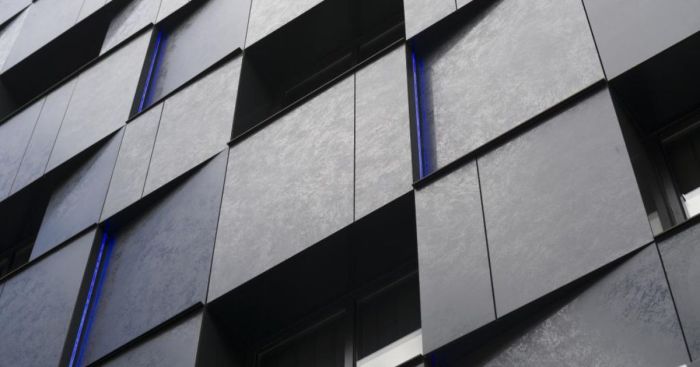
Trespa siding, while offering a compelling blend of durability and aesthetics, presents a significant investment. Understanding the cost factors and long-term implications, both financially and environmentally, is crucial for homeowners considering this option. This section delves into the pricing structure of Trespa siding, compares its lifecycle costs to alternatives, and examines its environmental footprint and sustainability attributes.
Factors Influencing Trespa Siding Cost
Several factors contribute to the overall cost of Trespa siding. The most significant is the size and complexity of the project. Larger homes naturally require more material, increasing the expense. The design itself plays a role; intricate detailing or custom cuts will add to labor costs. The chosen color and finish can also influence price, with some options commanding a premium. Finally, regional variations in labor rates and material transportation costs impact the final bill. For example, a large, custom-designed home in a high-labor-cost area will incur significantly higher expenses than a smaller, simpler project in a region with lower labor rates.
Cost-Effectiveness Compared to Other Siding Options
While Trespa siding carries a higher initial cost than some alternatives like vinyl or wood, its superior longevity and minimal maintenance requirements often lead to long-term cost savings. Vinyl siding, for instance, may require replacement more frequently due to fading, warping, or damage from impact. Wood siding demands regular painting and maintenance to prevent rot and insect infestation. Trespa’s resistance to these issues translates into reduced long-term expenses. A life-cycle cost analysis, considering initial investment, maintenance, and replacement costs over a 30-year period, would likely demonstrate Trespa’s cost-effectiveness compared to less durable materials. This analysis would need to account for regional pricing variations, labor costs, and specific environmental conditions.
Environmental Impact of Trespa Siding Production and Disposal
The production of Trespa siding involves the use of resources and energy, resulting in a carbon footprint. The manufacturing process, which includes the creation of high-pressure laminates, consumes energy and generates waste. However, Trespa’s commitment to sustainability is evident in their efforts to reduce their environmental impact through the use of recycled materials in their products and sustainable manufacturing practices. At the end of its life, Trespa siding can be recycled, although recycling infrastructure for this material may not be as widespread as for other materials like aluminum. Proper disposal methods are essential to minimize its environmental impact. Therefore, a responsible lifecycle approach to Trespa siding, including proper recycling, is crucial to mitigate its environmental footprint.
Sustainability Features of Trespa Siding
Trespa’s commitment to sustainability is reflected in several key aspects of their siding. The material’s long lifespan reduces the need for frequent replacements, lowering the overall resource consumption. Some Trespa products incorporate recycled materials in their composition, minimizing the reliance on virgin resources. Additionally, Trespa’s focus on durable, low-maintenance products reduces the need for frequent repairs and replacements, which translates to a reduced overall environmental impact compared to materials requiring more frequent maintenance or replacement. The company’s efforts in reducing energy consumption during the manufacturing process further enhance the sustainability profile of Trespa siding.
Cost Comparison of Siding Materials
The following table provides a comparative analysis of the cost of different siding materials, considering initial cost, maintenance cost, and lifespan. Note that these figures are estimates and can vary based on location, project size, and specific product choices.
| Siding Material | Initial Cost (per sq ft) | Annual Maintenance Cost (per sq ft) | Lifespan (Years) |
|---|---|---|---|
| Trespa | $8-15 | $0.10-0.50 | 50+ |
| Vinyl | $3-7 | $0.25-1.00 | 15-20 |
| Wood | $6-12 | $0.50-2.00 | 20-30 |
| Fiber Cement | $5-10 | $0.20-0.75 | 30-50 |
Trespa Siding Warranty and Customer Reviews
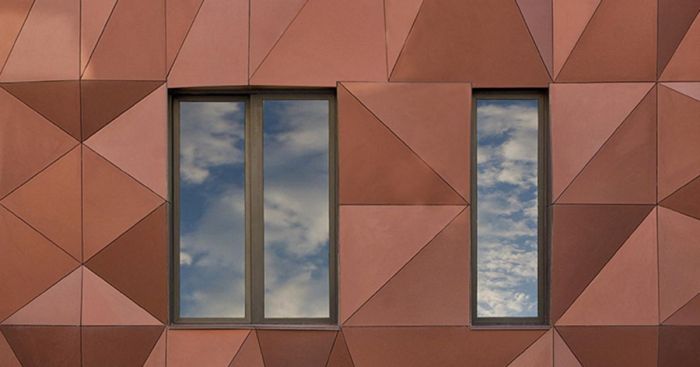
Understanding the warranty and reading customer reviews are crucial steps before investing in Trespa siding. A strong warranty demonstrates the manufacturer’s confidence in their product, while customer feedback offers real-world insights into its performance and longevity. This section details Trespa’s warranty, provides examples of customer experiences, and explains how to navigate the warranty claim process and find reliable information.
Trespa’s warranty specifics vary depending on the region and the specific product line. It’s essential to check the warranty certificate included with your purchase or contact Trespa directly to obtain the most accurate and up-to-date information for your location and product. Generally, Trespa warranties cover manufacturing defects and material flaws, but they may exclude damage caused by improper installation, weather events beyond normal expectations, or general wear and tear. The warranty duration also varies, usually ranging from several years to decades, depending on the specific product and claim type.
Trespa Siding Warranty Details
The Trespa warranty typically covers defects in materials and workmanship for a specified period. This often includes things like delamination, cracking, fading, and other issues stemming from manufacturing errors. However, it’s crucial to note that warranties usually exclude damage resulting from improper installation, vandalism, or acts of nature like severe hailstorms or hurricanes. Specific exclusions and limitations are clearly Artikeld in the warranty document itself, which should be carefully reviewed. The warranty period typically begins on the date of installation. Contacting a Trespa representative or consulting the official Trespa website is recommended for precise details concerning your specific product and location.
Customer Reviews and Testimonials, Trespa siding
Online forums, review sites, and home improvement blogs often feature customer reviews of Trespa siding. While individual experiences can vary, common themes emerge. Many users praise Trespa’s durability, low-maintenance nature, and aesthetically pleasing appearance. Positive feedback frequently highlights its resistance to fading, chipping, and impact damage compared to traditional wood or vinyl siding. However, some reviews mention potential challenges related to installation, particularly for complex projects requiring specialized knowledge or tools. It’s vital to approach reviews critically, considering factors such as the reviewer’s experience level and potential biases. Looking for consistent patterns across multiple reviews is key to forming a well-rounded understanding. For example, one common positive review might describe the siding’s resistance to extreme weather conditions, whereas a negative review might detail issues with discoloration over an extended period (possibly due to localized environmental factors).
Filing a Trespa Warranty Claim
The process for filing a warranty claim typically involves contacting Trespa directly through their official website or by phone. You will likely need to provide documentation such as proof of purchase, installation date, and detailed photographs or videos of the damaged siding. Trespa may require an inspection by a qualified installer or representative to verify the nature and cause of the damage. Be prepared to provide clear and concise information about the problem, including the specific location of the damage and the circumstances surrounding its occurrence. Following Trespa’s instructions carefully throughout the claim process is crucial for a smooth resolution.
Finding Reliable Information on Trespa Siding Performance
Reliable information sources include Trespa’s official website, independent testing reports from reputable organizations, and professional installer testimonials. Avoid relying solely on anecdotal evidence or biased reviews. Look for information backed by data and verifiable evidence. For example, a reliable source might provide detailed technical specifications on impact resistance or UV stability, while an unreliable source might only offer vague claims without supporting evidence. Checking multiple sources and comparing their findings can help build a more complete and accurate picture of Trespa siding’s performance.
Common Customer Concerns and Trespa’s Responses
Several common concerns arise regarding Trespa siding. Understanding how Trespa addresses these issues can help potential buyers make informed decisions.
- Concern: High initial cost. Trespa’s Response: Trespa highlights the long-term cost savings associated with its durability and low-maintenance nature, offsetting the higher upfront investment.
- Concern: Installation complexity. Trespa’s Response: Trespa provides detailed installation guides and recommends using certified installers to ensure proper installation and avoid warranty issues.
- Concern: Potential for discoloration over time. Trespa’s Response: Trespa emphasizes the UV resistance of its materials and offers various color options designed for long-term color retention. However, they acknowledge that some discoloration might occur over many years depending on environmental conditions.
- Concern: Repairing damaged panels. Trespa’s Response: Trespa provides guidance on repairing minor damage and offers replacement panels through its warranty program for major issues.
Ultimately, the choice of Trespa siding hinges on a careful evaluation of your specific needs and priorities. Its superior durability, low-maintenance requirements, and aesthetic flexibility make it a strong contender, but factors like initial cost and regional availability must also be considered. By weighing the long-term cost-effectiveness against other options, and by understanding the nuances of installation and maintenance, you can determine if Trespa siding is the right choice to elevate the look and longevity of your building. This guide aims to equip you with the comprehensive information necessary to make that informed decision with confidence.
FAQ
What is the lifespan of Trespa siding?
Trespa siding is designed for exceptional longevity, often boasting a lifespan exceeding 50 years with proper maintenance.
Can Trespa siding be painted?
No, Trespa siding is not designed to be painted. Its color is integral to the material.
Is Trespa siding recyclable?
While not directly recyclable in the same way as some materials, Trespa actively works on end-of-life solutions and encourages responsible disposal through its network.
How does Trespa siding compare to fiber cement in terms of weight?
Trespa siding is generally lighter than fiber cement siding, making installation potentially easier and reducing structural load.
Does Trespa siding require special tools for installation?
While standard carpentry tools are sufficient, specialized tools might enhance precision and efficiency. Consult the manufacturer’s installation guide for recommendations.
